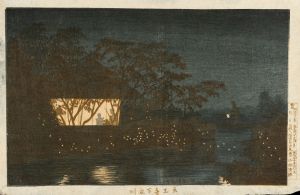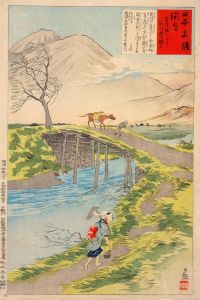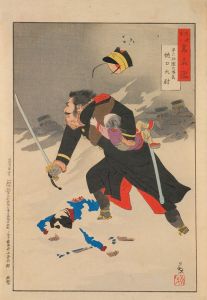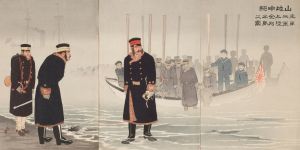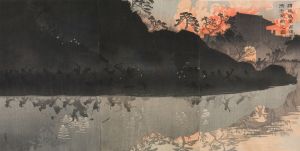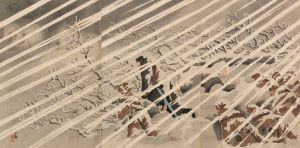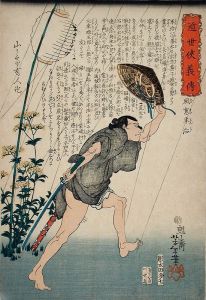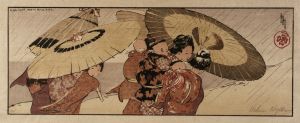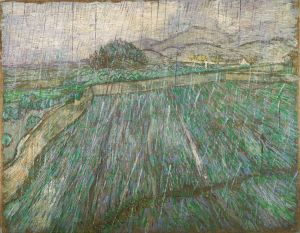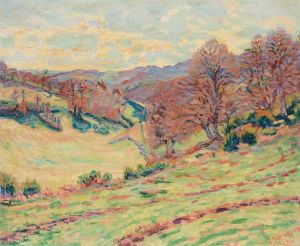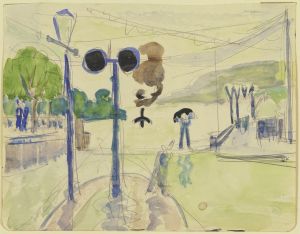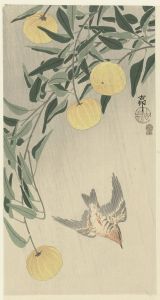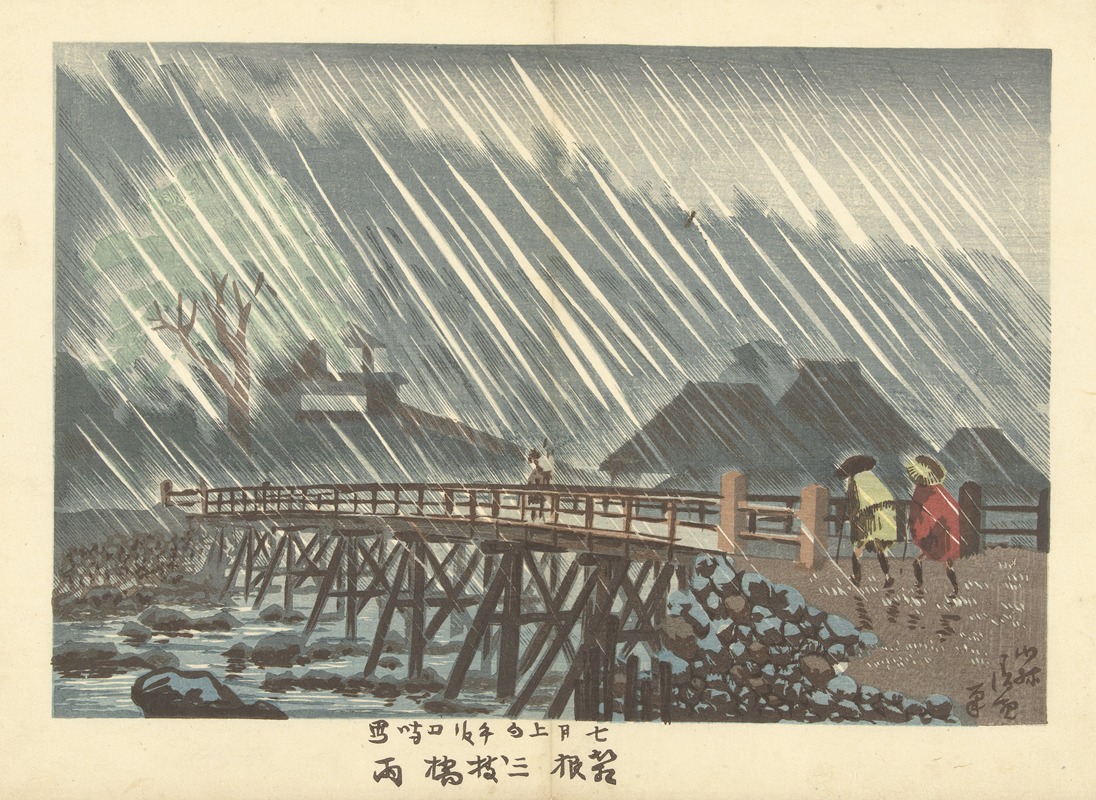
Rain At Sanmaibashi In Hakone
A hand-painted replica of Kobayashi Kiyochika’s masterpiece Rain At Sanmaibashi In Hakone, meticulously crafted by professional artists to capture the true essence of the original. Each piece is created with museum-quality canvas and rare mineral pigments, carefully painted by experienced artists with delicate brushstrokes and rich, layered colors to perfectly recreate the texture of the original artwork. Unlike machine-printed reproductions, this hand-painted version brings the painting to life, infused with the artist’s emotions and skill in every stroke. Whether for personal collection or home decoration, it instantly elevates the artistic atmosphere of any space.
Kobayashi Kiyochika (1847–1915) was a prominent Japanese artist known for his innovative approach to ukiyo-e, a genre of woodblock prints and paintings that flourished in Japan from the 17th through 19th centuries. Kiyochika's work is often noted for its unique blend of traditional Japanese art techniques and Western influences, particularly in the use of light and shadow. One of his notable works is "Rain at Sanmaibashi in Hakone," which exemplifies his distinctive style and thematic focus.
"Rain at Sanmaibashi in Hakone" is part of Kiyochika's series of prints that capture the atmospheric and transient effects of light and weather. This particular piece depicts a rainy scene at Sanmaibashi, a location in Hakone, which is known for its scenic beauty and historical significance as a post station on the Tokaido road, the main route connecting Edo (modern-day Tokyo) and Kyoto during the Edo period. The print is characterized by its moody and evocative portrayal of rain, a common subject in Japanese art that symbolizes both beauty and melancholy.
Kiyochika's work during this period was heavily influenced by the rapid modernization and Westernization of Japan during the Meiji era (1868–1912). He was particularly interested in the effects of light, a fascination that was likely inspired by Western art and photography. In "Rain at Sanmaibashi in Hakone," Kiyochika employs a sophisticated use of chiaroscuro, the contrast between light and dark, to create a sense of depth and atmosphere. The rain is depicted with delicate lines, and the reflections on the wet surfaces add to the realism and mood of the scene.
The composition of the print is carefully balanced, with the bridge and surrounding landscape creating a harmonious and tranquil scene despite the inclement weather. This reflects Kiyochika's ability to capture the essence of a moment, a skill that has led many to regard him as a master of the "pictures of the floating world" genre. His work often conveys a sense of nostalgia and contemplation, inviting viewers to pause and appreciate the fleeting beauty of nature.
Kiyochika's prints, including "Rain at Sanmaibashi in Hakone," are significant not only for their artistic merit but also for their historical context. They provide a visual record of a transformative period in Japanese history, capturing the tension between tradition and modernity. His work has been compared to that of Western Impressionists, who were similarly interested in capturing the effects of light and atmosphere.
Today, Kiyochika is celebrated as one of the last great ukiyo-e artists, and his work continues to be studied and admired for its technical skill and emotional depth. "Rain at Sanmaibashi in Hakone" remains a testament to his unique vision and his ability to blend the old with the new, creating art that resonates with viewers across cultures and eras.





